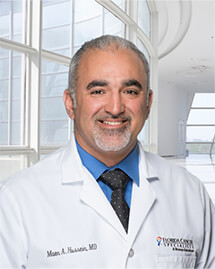Author(s): John V. Heymach, M.D., Ph.D., David Harpole, M.D., Tetsuya Mitsudomi, M.D., Ph.D., Janis M. Taube, M.D., Gabriella Galffy, M.D., Ph.D., Maximilian Hochmair, M.D., Thomas Winder, M.D., Ph.D., Ruslan Zukov, M.D., Ph.D., Gabriel Garbaos, M.D., Shugeng Gao, M.D., Ph.D., Hiroaki Kuroda, M.D., Ph.D., Gyula Ostoros, M.D., Tho V. Tran, M.D., Jian You, M.D., Ph.D., Kang-Yun Lee, M.D., Ph.D., Lorenzo Antonuzzo, M.D., Ph.D., Zsolt Papai-Szekely, M.D., Hiroaki Akamatsu, M.D., Ph.D., Bivas Biswas, M.B., B.S., M.D., Alexander Spira, M.D., Ph.D., Jeffrey Crawford, M.D., Ha T. Le, M.D., Ph.D., Mike Aperghis, Ph.D., Gary J. Doherty, M.D., Ph.D., Helen Mann, M.Sc., Tamer M. Fouad, M.D., Ph.D., and Martin Reck, M.D., Ph.D. for the AEGEAN Investigators*
Author Affiliations
From the Department of Thoracic–Head and Neck Medical Oncology, University of Texas M.D. Anderson Cancer Center, Houston (J.V.H.), and US Oncology Research, the Woodlands (A.S.) — both in Texas; the Department of Surgery, Duke University Medical Center (D.H.), and Duke Cancer Institute (J.C.) — both in Durham, NC; the Division of Thoracic Surgery, Department of Surgery, Kindai University Faculty of Medicine, Osaka-Sayama (T.M.), the Department of Thoracic Surgery, Aichi Cancer Center Hospital, Aichi (H.K.), and Internal Medicine III, Wakayama Medical University, Wakayama (H.A.) — all in Japan; the Bloomberg–Kimmel Institute for Cancer Immunotherapy, Johns Hopkins Kimmel Cancer Center, Baltimore (J.M.T.); Törökbalint Institute of Pulmonology, Törökbálint (G. Galffy), Koranyi National Institute for TB and Pulmonology, Budapest (G.O.), and the University Teaching Hospital of Fejér County, Székesfehérvár (Z.P.-S.) — all in Hungary; the Department of Respiratory and Critical Care Medicine, Karl Landsteiner Institute of Lung Research and Pulmonary Oncology, Klinik Floridsdorf, Vienna (M.H.), and the Department of Hematology, Oncology, Gastroenterology and Infectiology, Landeskrankenhaus Feldkirch, Feldkirch (T.W.) — both in Austria; Krasnoyarsk State Medical University, Krasnoyarsk, Russia (R.Z.); Fundación Estudios Clínicos, Santa Fe, Argentina (G. Garbaos); the Thoracic Surgery Department, National Cancer Center–National Clinical Research Center for Cancer–Cancer Hospital, Chinese Academy of Medical Sciences and Peking Union Medical College, Beijing (S.G.), and the Department of Lung Cancer, Tianjin Medical University Cancer Institute and Hospital, National Clinical Research Center for Cancer, Tianjin’s Clinical Research Center for Cancer, Key Laboratory of Cancer Prevention and Therapy, Tianjin (J.Y.) — both in China; the Oncology and Chemotherapy Department, University Medical Center of Ho Chi Minh City, Ho Chi Minh City (T.V.T.), and No. 1 Medical Oncology Department, Hanoi Oncology Hospital, Hanoi (H.T.L.) — both in Vietnam; the Department of Internal Medicine, Shuang Ho Hospital, Taipei Medical University, New Taipei City, Taiwan (K.-Y.L.); the Clinical Oncology Unit, Careggi University Hospital, Department of Experimental and Clinical Medicine, University of Florence, Florence, Italy (L.A.); Tata Medical Center, Kolkata, India (B.B.); Virginia Cancer Specialists Research Institute, Fairfax (A.S.); AstraZeneca, Cambridge, United Kingdom (M.A., G.J.D., H.M.); AstraZeneca, New York (T.M.F.); and Lung Clinic Grosshansdorf, Airway Research Center North, German Center for Lung Research, Grosshansdorf, Germany (M.R.).
